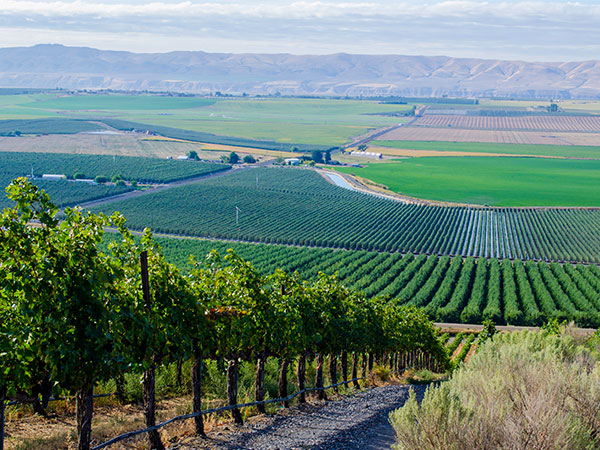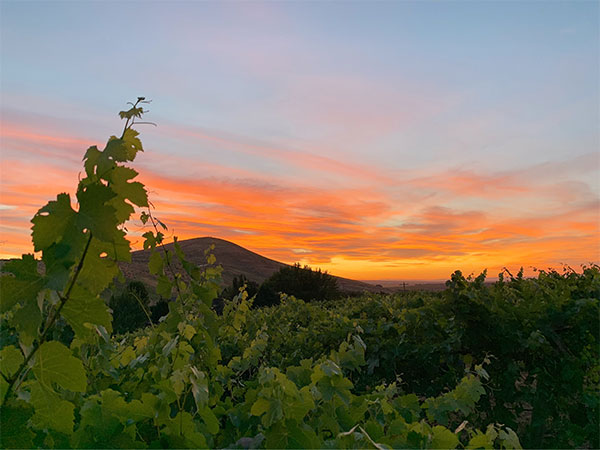In October 2020, the TTB approved two new sub-appellations within the sprawling 12-million-acre Columbia Valley.
North of the Wahluke Slope by about 15 miles, the Royal Slope rises up the Frenchman Hills, a set of rolling anticline hills running east-west more or less in the center of the Columbia Valley. Much of the vineyard activity is at higher elevations—upwards of 1,500 feet, according to Mike Januik, who’s been working with fruit from Stillwater Creek Vineyard for more than 20 years. That elevation lies above the land affected by the Missoula Floods, and the soils are quite different than in surrounding areas. “There’s a lot less windblown material,” he says, “lots of fractured basalt, with much of it on the surface.”


Looking east from the observation platform at Stillwater Creek, the Royal Slope runs to the horizon in a single, fairly uniform south-facing slant, well-situated to maximize sunlight exposure and wind drainage. Despite the northern latitude, it’s not a place that succumbs to frost or freezes. “Cold air just slides down the vineyard into the valley,” says Januik.
The situation nearly assures exceptional color and good flavors, he says. “Early on, my wife was cleaning out a tank of Stillwater Creek syrah and she asked me, ‘Do you think it’s possible for a wine to have too much color?’ I told her that’s not something I’m going to worry about.”
The entire appellation encompasses more than 150,000 acres, with 13 vineyards covering only 1,900 acres—so there’s plenty of room to grow.
Southeast of the Royal Slope by about 50 miles as the crow flies is Candy Mountain, Washington’s smallest appellation at 815 acres (with 110 planted). If you’ve been to Red Mountain, outside of Benton City, then it’s likely that you’ve seen Candy Mountain: It’s the grooved hill rising like a reptile’s back on the appellation’s southeast border. Without it, Red Mountain would seem to have no end.


Like Red Mountain, Candy Mountain largely faces south. Its soils are composed of windblown sand and loess, very free-draining, an easy environment to grow vines, says Marty Clubb of L’Ecole No 41. For several vintages now, Clubb has been purchasing fruit from Candy Mountain Vineyard, for years the region’s only operation; the fruit has typically gone into L’Ecole’s Columbia Valley appellation bottlings. “There’s not a lot you can point to yet,” says Clubb, “aside from the fact that it’s very much like Red Mountain, with a similar wind flow, similar soil structure, rainfall, heat units…it all comes down to however it’s managed to take it to the upper tier.”
Patrick J. Comiskey covers US wines for Wine & Spirits magazine, focusing on the Pacific Northwest, California’s Central Coast and New York’s Finger Lakes.
This story appears in the print issue of December 2020.
Like what you read? Subscribe today.
















